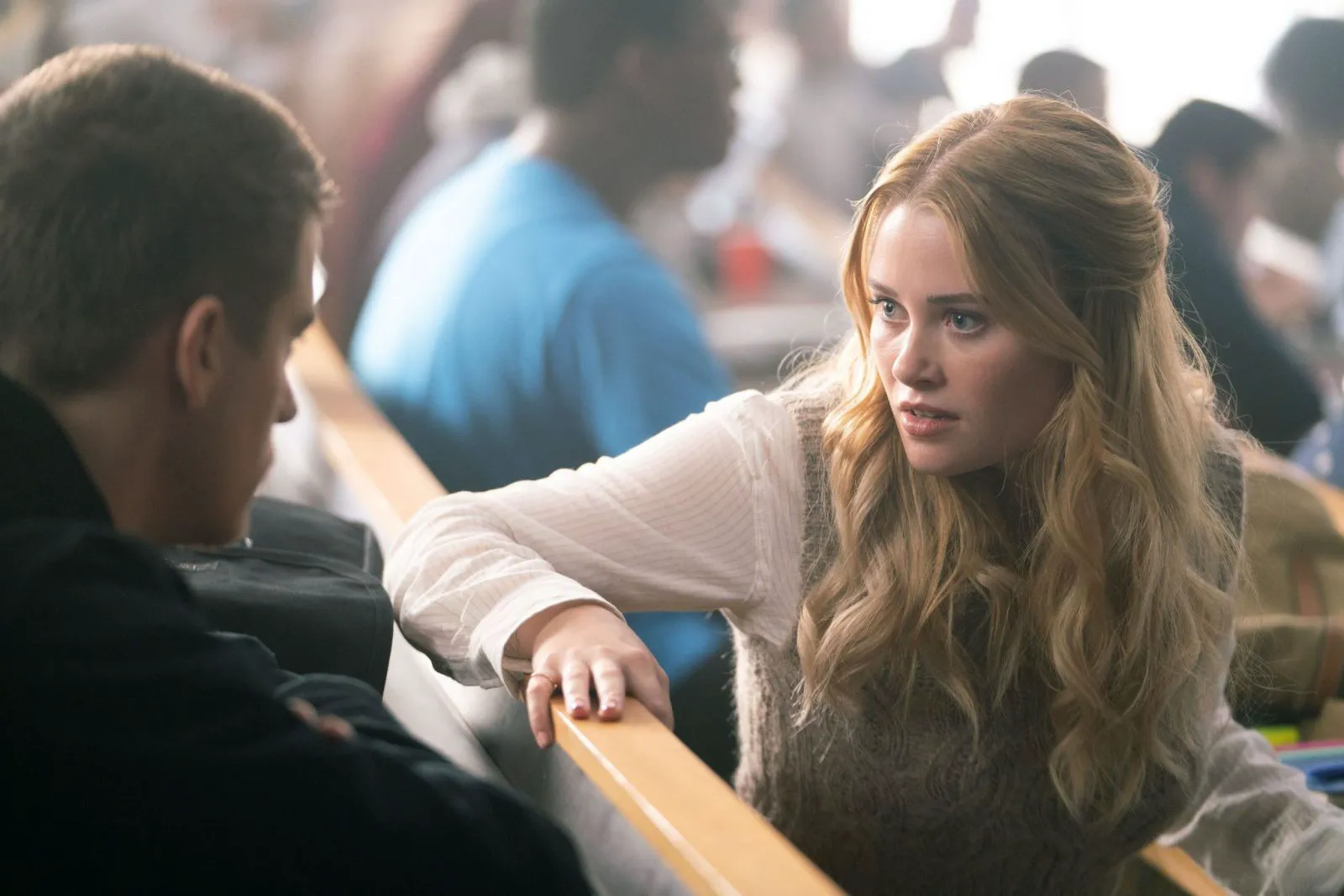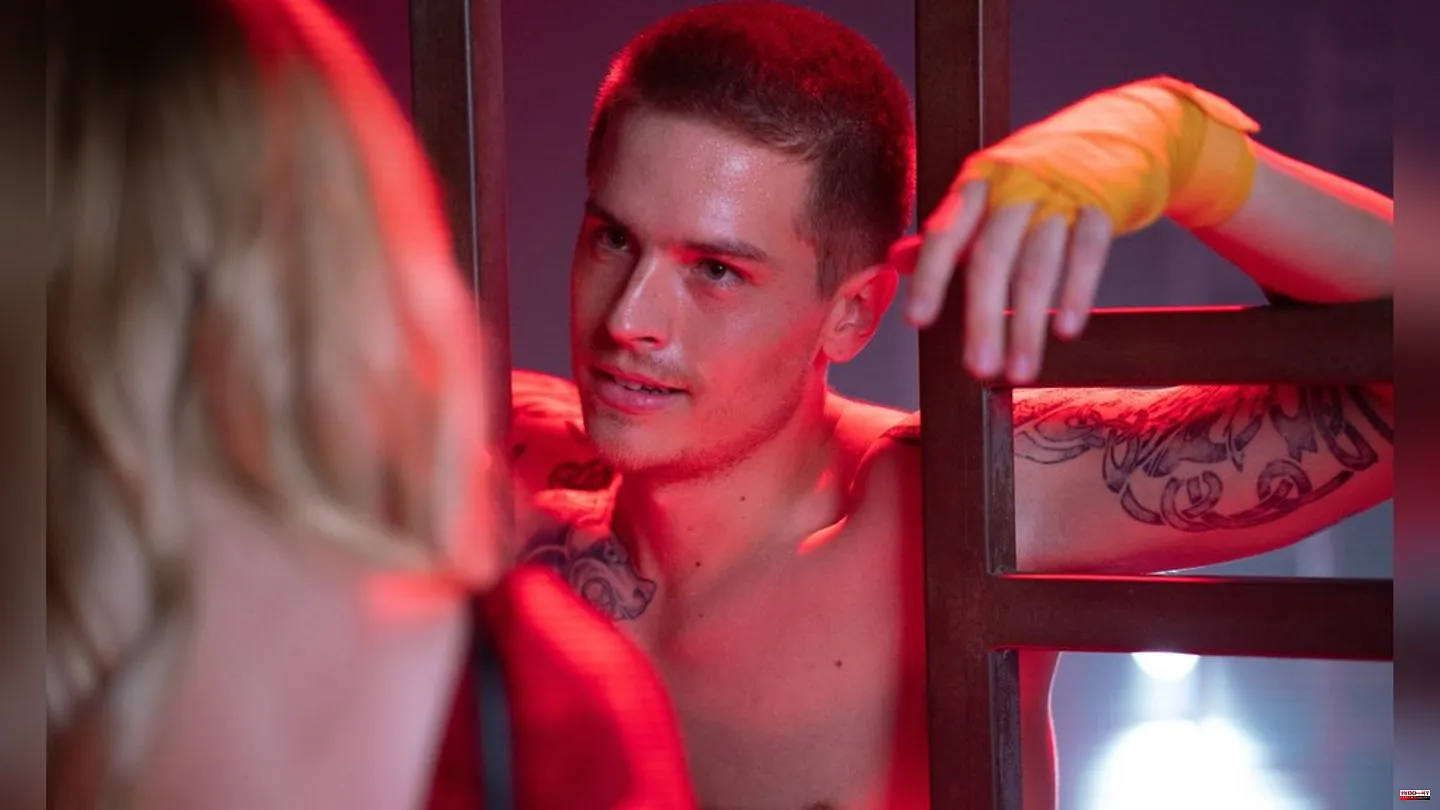In the realm of straightforward teen rom-coms, a delightful addition has emerged: American author Jamie McGuire’s novel “Beautiful Disaster,” which topped The New York Times’ bestseller list in 2012, has finally received its Hollywood adaptation 12 years later. McGuire, like her predecessors E.L. James (“Fifty Shades of Grey”), Beth Reekles (“The Kissing Booth”), and Anna Todd (“After”), is far removed from the elite graduates of Bennington and likely never dreamed of a major career in Hollywood. But here we are. While shamelessly expensive adaptations of cult fantasy struggle to find their place in international distribution, simple stories about teenage lovers continue to win the hearts of audiences. Surprisingly, in the case of “Beautiful Disaster,” being won over isn’t shameful at all, and even somewhat enjoyable.
The Plot
The film’s protagonist, 17-year-old Abby (Virginia Gardner), escapes from her gambling-addicted father, enrolls in college, and finally begins to live for herself. One day, Abby meets Travis (Dylan Sprouse), an underground fighting champion and charming ladies’ man, who proposes a bet: if he wins his next fight, she will live with him for a month. Abby flippantly agrees, confident that Travis will never win her heart.

Virginia Gardner as Abby Abernathy in a still from “Beautiful Disaster”
Beyond the Predictable
Of course, Abby is wrong, but that’s not the point. In films with plots that are transparent from beginning to end, the motivations and actions of the characters follow a well-worn path and rarely stick in the memory. Only the images remain on the surface – contradictory, charismatic, and in Travis’s case, devilishly attractive. “Beautiful Disaster” could have easily been lost in the ocean of other saccharine teen melodramas if director Roger Kumble (director of the cult classic “Cruel Intentions” from 1999) had followed the beaten path of “After.” Fortunately for us all, Kumble refused to build a drama on empty ground, choosing laughter as a defense against tired clichés. After all, nothing enhances a mediocre story like the awareness of its own imperfection. Abby doesn’t try to be the best girl in class, and Travis barely passes for an unfathomably beautiful prince with the mark of pain in his gloomy gaze. The most intriguing thing about these characters is their normalcy, the absence of painful agony in their hearts that turns any hint of feeling into ashes. Both Travis and Abby, at some point in their lives, chose simply to be, rather than endlessly reliving the traumas of the past. And if she stopped “saving” her gambling-addicted father, he didn’t follow the path of a victim complex due to his too-early departed mother.

Dylan Sprouse as Travis Maddox in a still from “Beautiful Disaster”
A Fresh Take on Romance
In contrast to the traditions of “After,” Kumble doesn’t even try to impress viewers with sterile erotic scenes advertising expensive condoms, rightly understanding that modern teenagers don’t need another lecture on the topic of “1001 questions about that.” Especially from a little-known 56-year-old man. Travis and Abby go through all possible variations of sexual awkwardness that can only arise between two people of opposite sexes sleeping in the same bed, gradually grow closer, and say the cherished “I love you” in moments of simple human, but absolutely not cinematic, life.
A Comforting Escape
In a period when male femininity and female masculinity have reached their peak, films like “Beautiful Disaster” become a sweet consolation for those who, despite all the hardships of today’s world, continue to seek a quiet haven for their lonely souls. After all, if everything worked out for Travis and Abby, then it will work out for us – ordinary viewers – someday too.